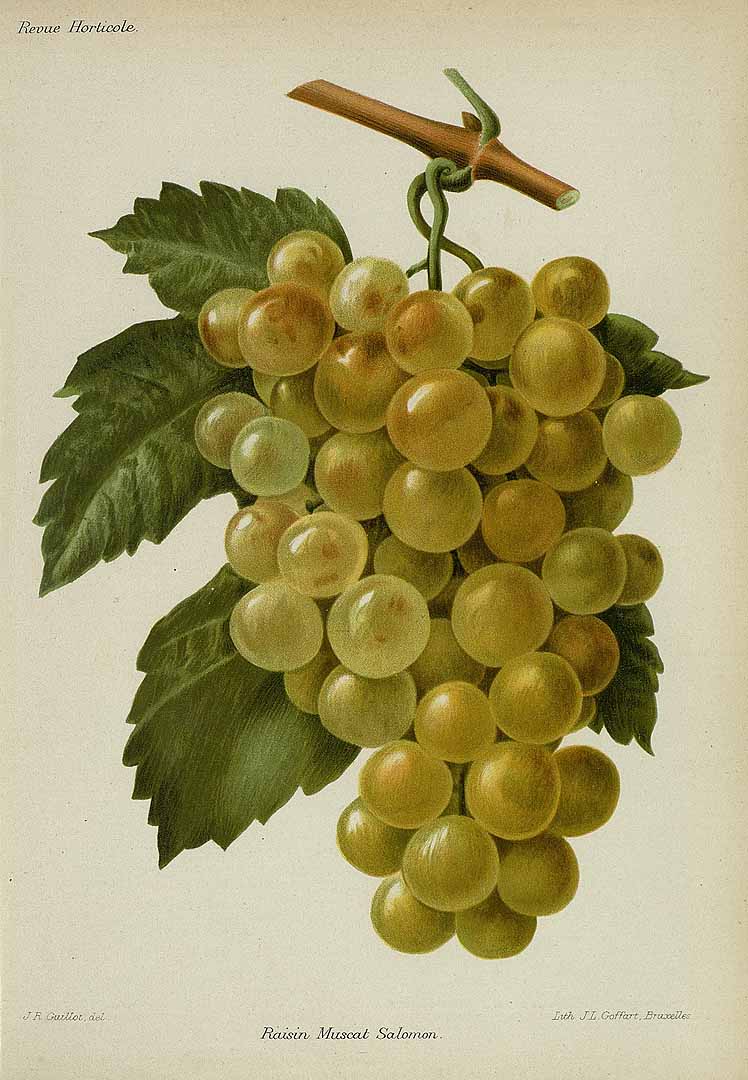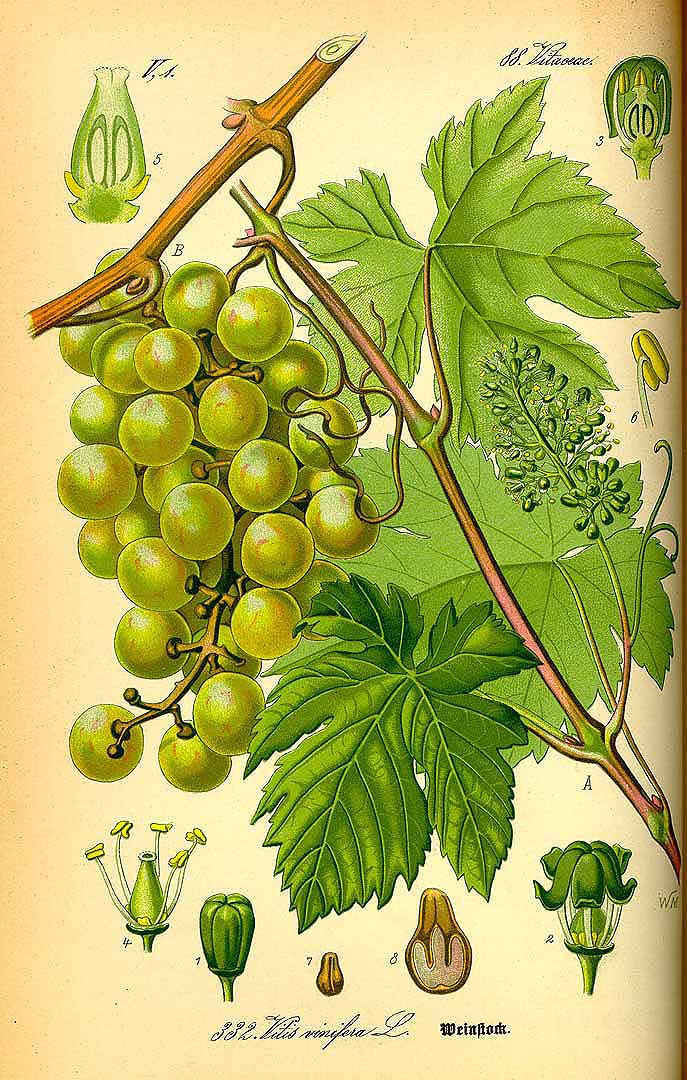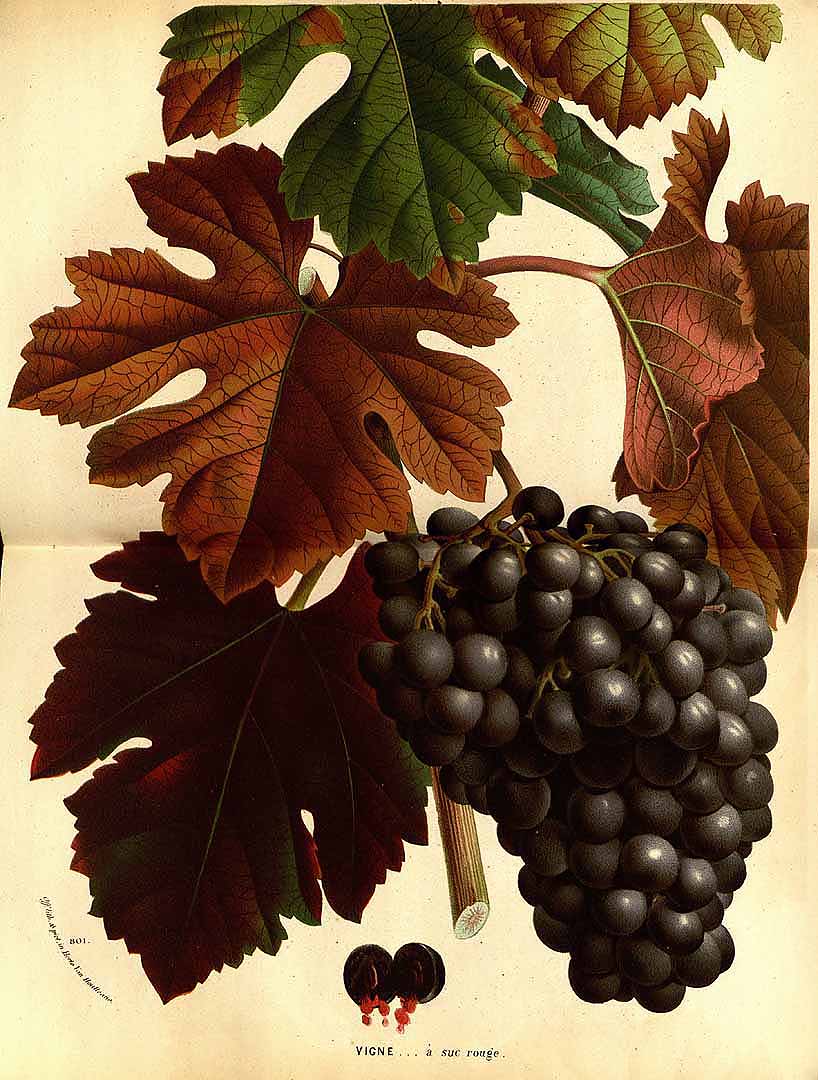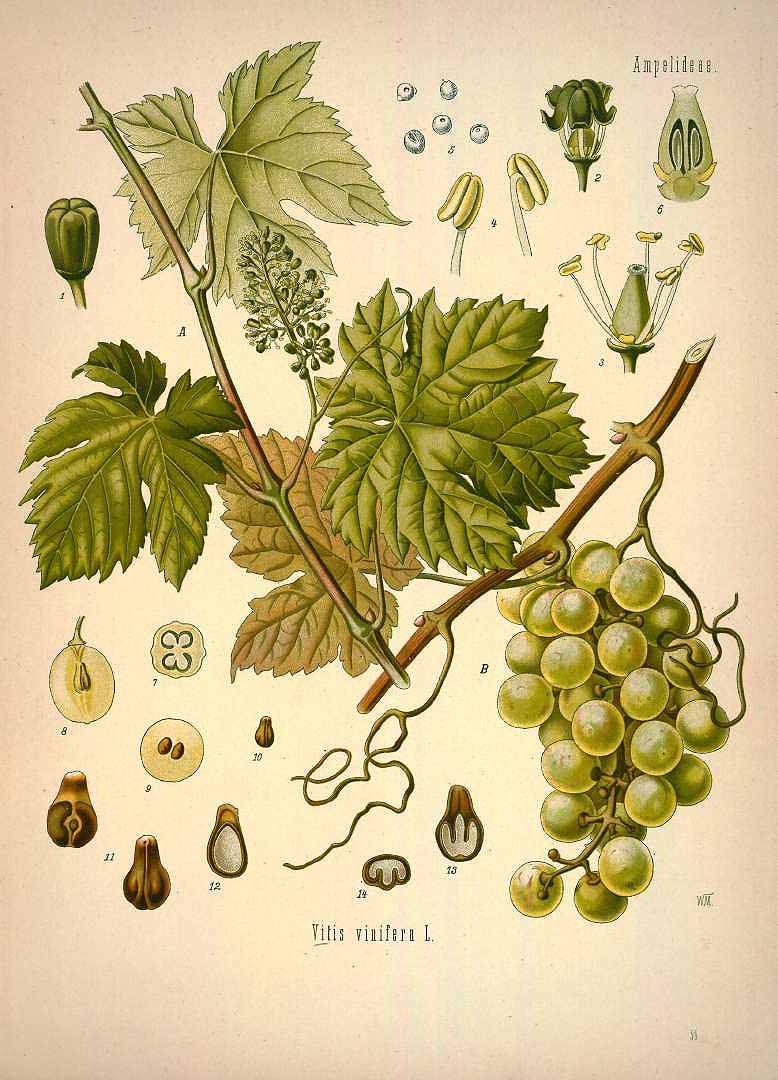! Nouveau site ici !
Vita > Plantae > Magnoliophyta > Magnoliopsida > Rhamnales >
Vitaceae > Vitis
Vitis vinifera
(Vigne)



 | *****
| *****
Vita > Plantae > Magnoliophyta > Magnoliopsida > Rhamnales >
Vitaceae > Vitis
Vitis vinifera
(Vigne)

Une vigne ligneuse qui ne cesse de croître d'année en année. Il est souvent taillé pour réduire sa taille. Il grimpe par des vrilles enroulées qui s'attachent aux objets. Il a de grandes feuilles qui sont... (traduction automatique)
→suite
⬀
Le  donne accès au menu
donne accès au menu (c'est votre point de repère) 😊 ;
En dessous vous avez la classification, à partir de la vie (Vita, premier rang) jusqu'à la classe au dessus de la plante, dont vous trouvez ensuite le nom scientifique/botanique (latin) puis le nom commun (français), le cas échéant ;
C'est aussi un lien vers la fiche complète (tout comme la ✖, en bas à droite, et le +, en dessous de la description) ;
Vient alors l'illustration (ou ce qui la remplace, en attendant), la comestibilité :
Et en bas
⬂









